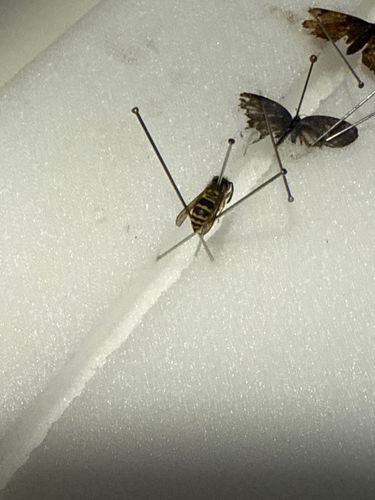Yellowjacket
Scientific Name: Vespula spp. or Dolichovespula spp.
Order & Family: Hymenoptera, Vespidae
Size: 10-16 mm (worker) to 20 mm (queen)

Natural Habitat
Yellowjackets are common in urban and suburban areas, forests, fields, and essentially any environment where they can find food and suitable nesting sites. Nests can be aerial (in trees or shrubs) or subterranean (in the ground, often in abandoned rodent burrows).
Diet & Feeding
Yellowjackets are omnivorous. Adults primarily feed on sugars from nectar, ripe fruits, and human foods like soda and sweets. They also hunt other insects (like flies, caterpillars, and spiders) to feed their larvae, which require protein.
Behavior Patterns
Yellowjackets are social insects living in colonies that can number in the thousands. They are known for their aggressive defensive behavior when their nest is disturbed. Unlike bees, they can sting multiple times. Their activity peaks in late summer and early autumn when colonies are largest and foraging for food for new queens and males.
Risks & Benefits
Risks: Yellowjacket stings are painful and can cause allergic reactions in sensitive individuals, potentially leading to anaphylaxis. They can be a nuisance at picnics and outdoor events due to their attraction to human food. Benefits: They act as important predators of many garden pests, helping to control insect populations.
Identified on: 9/21/2025